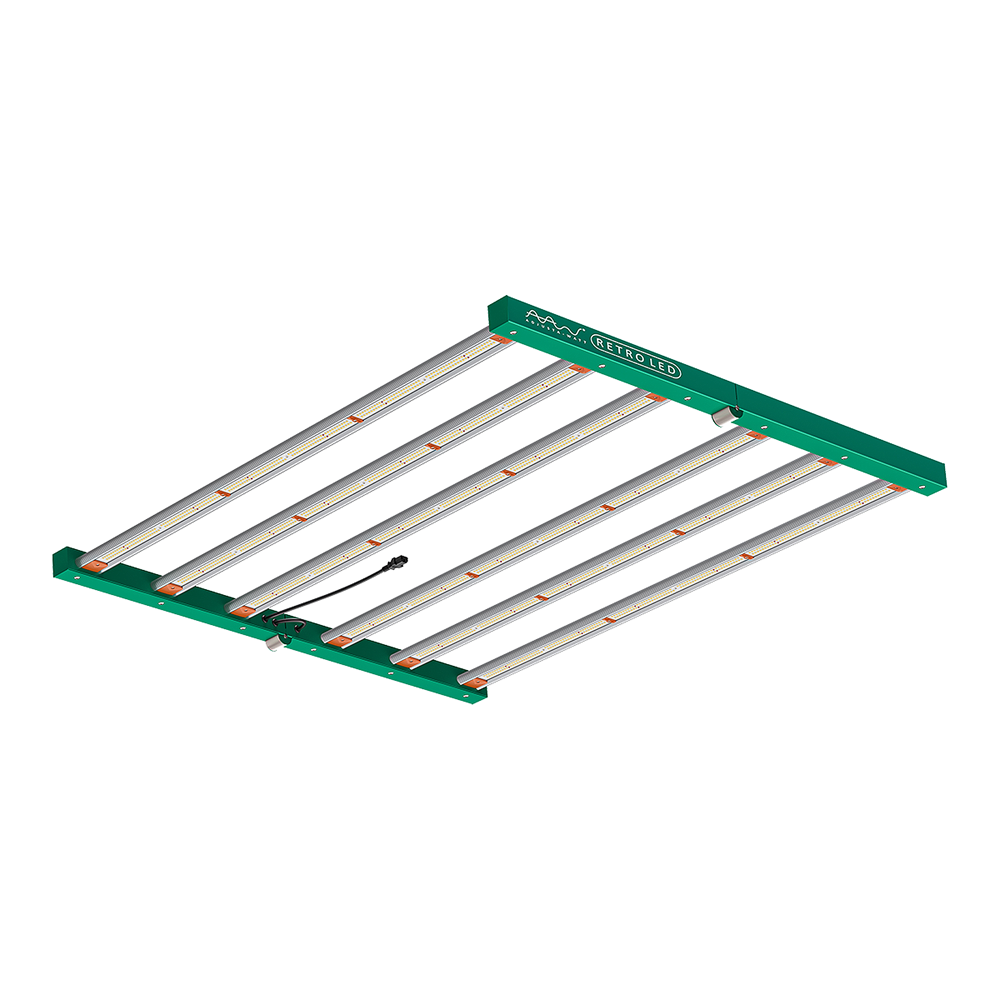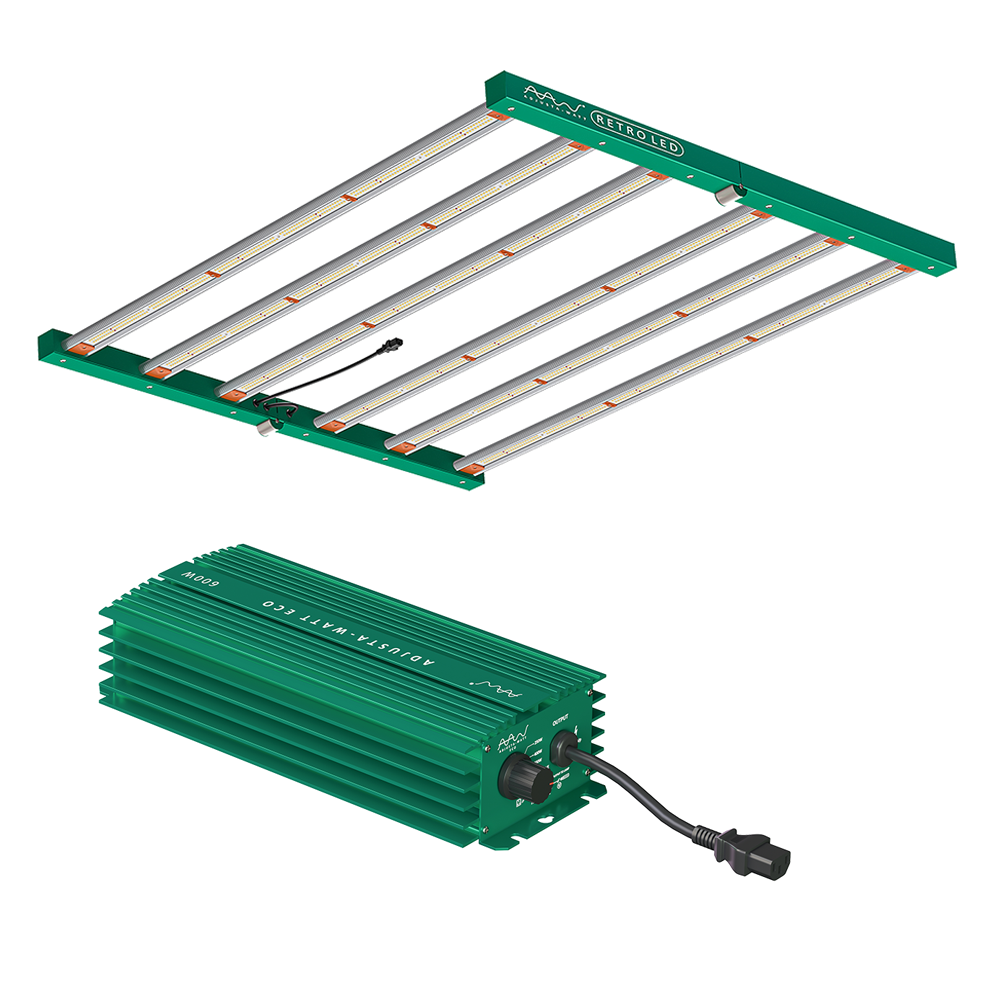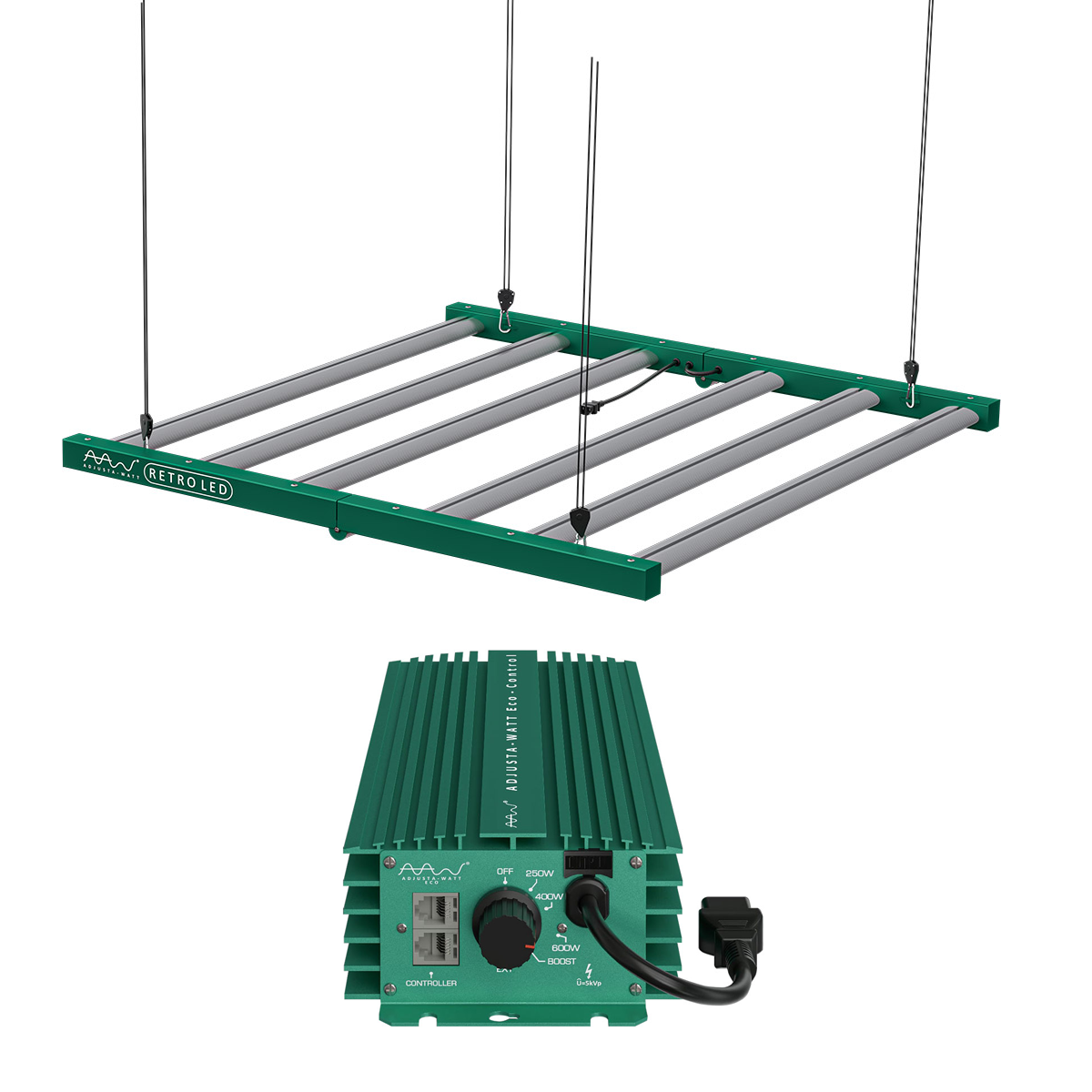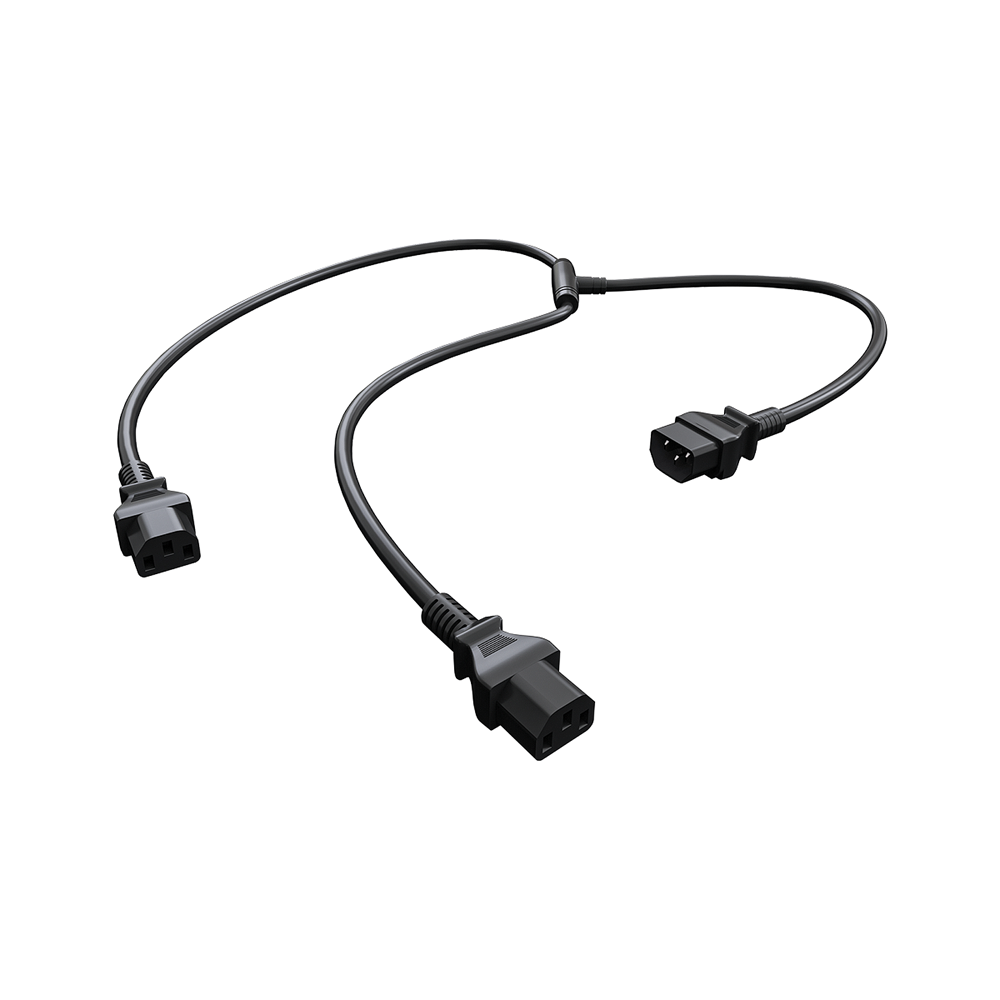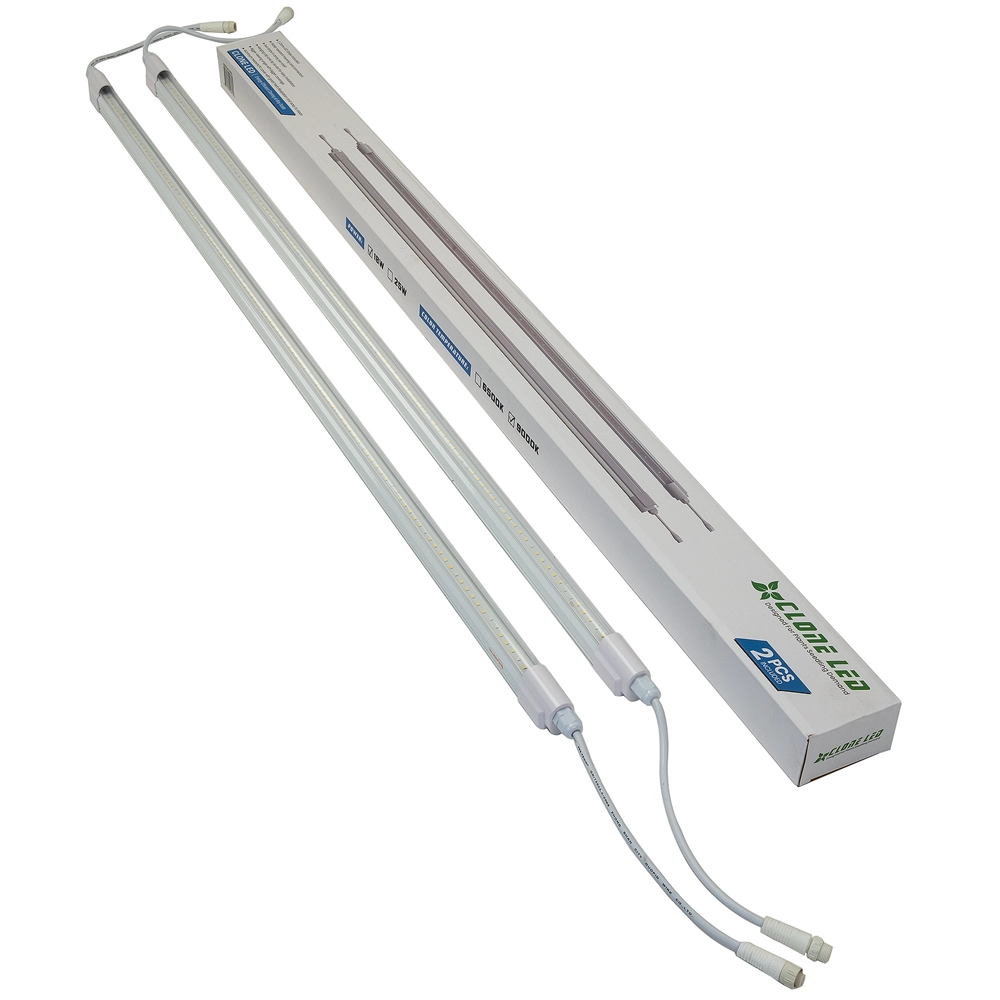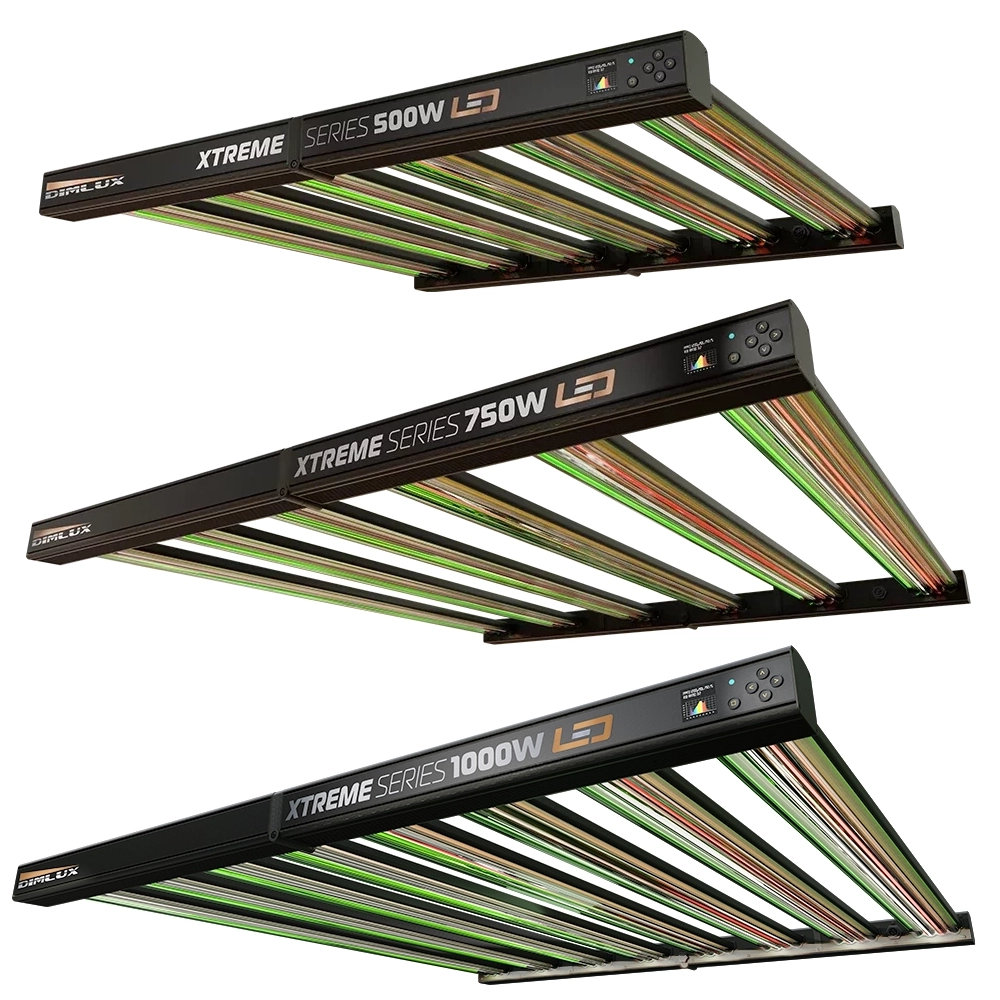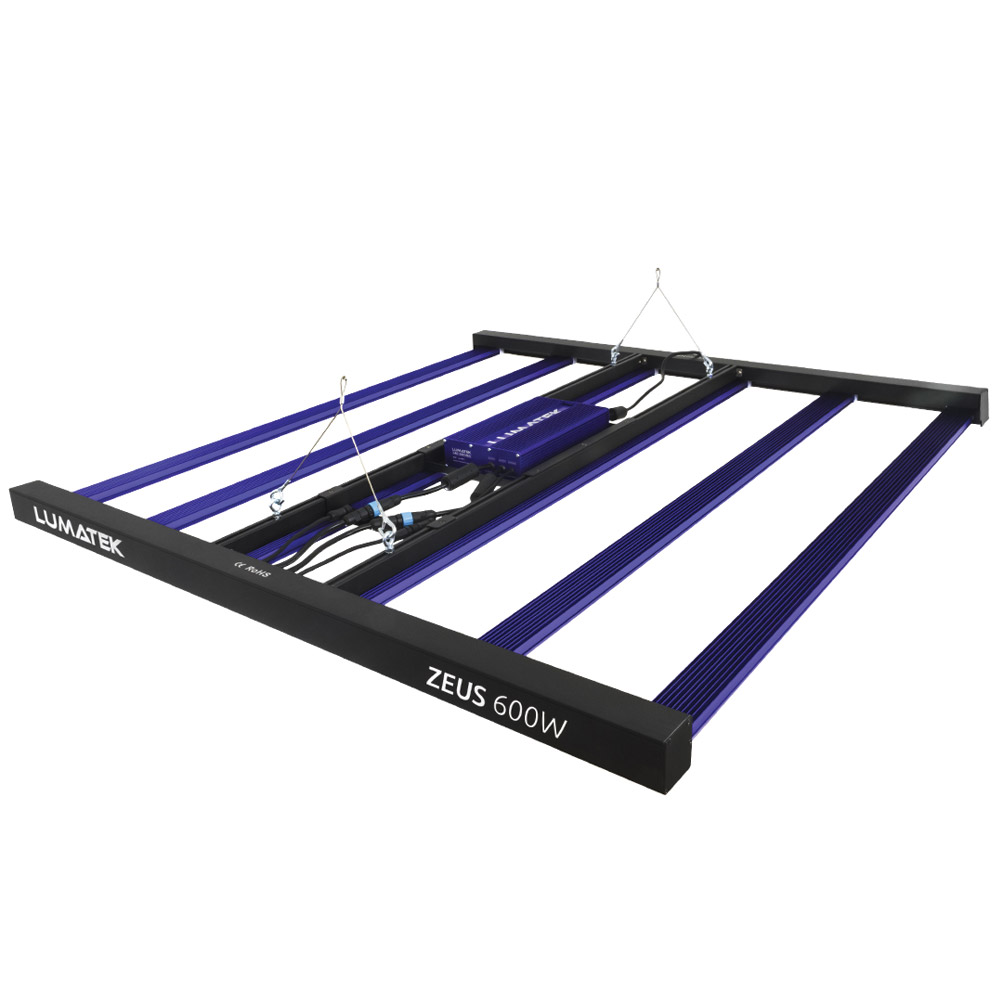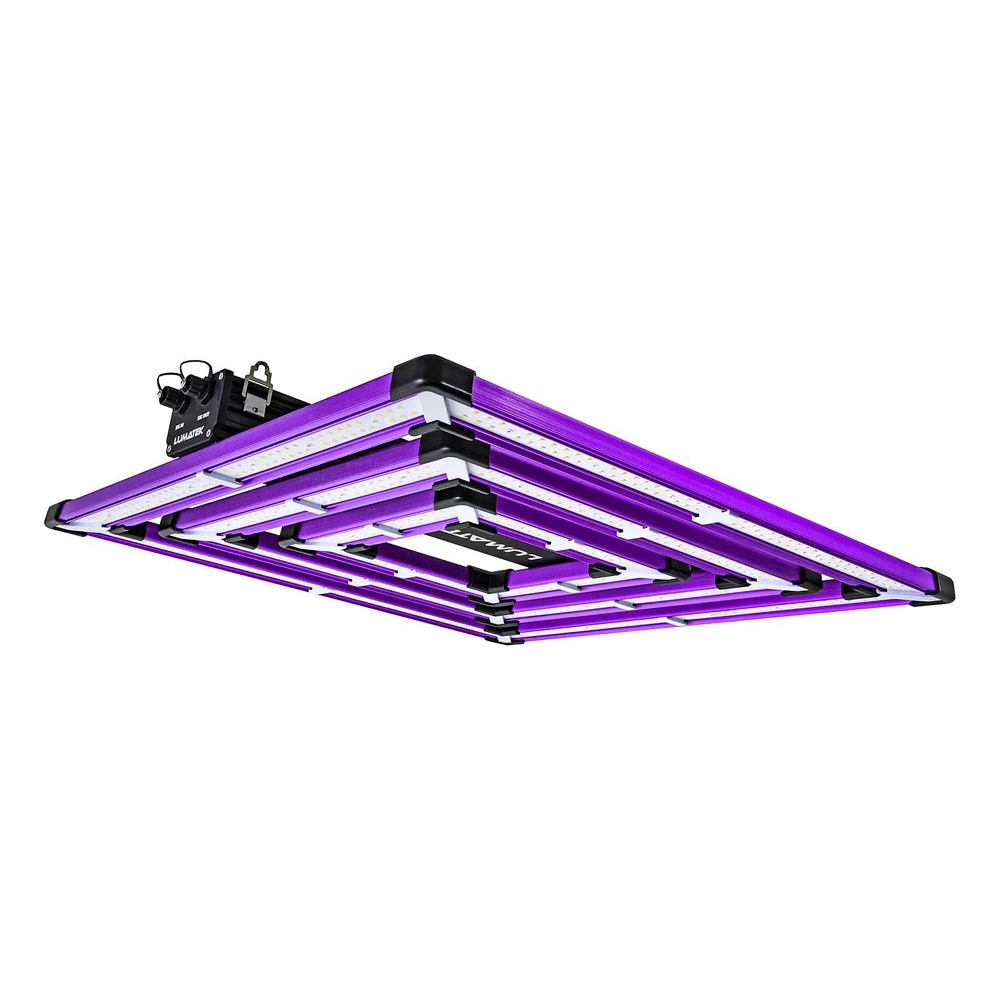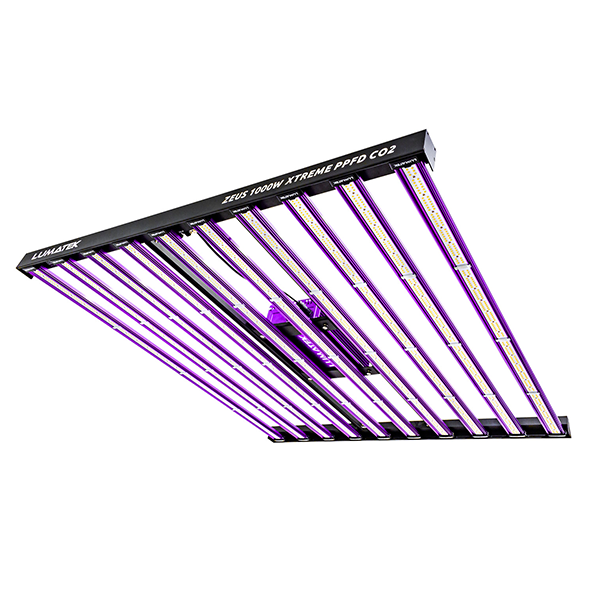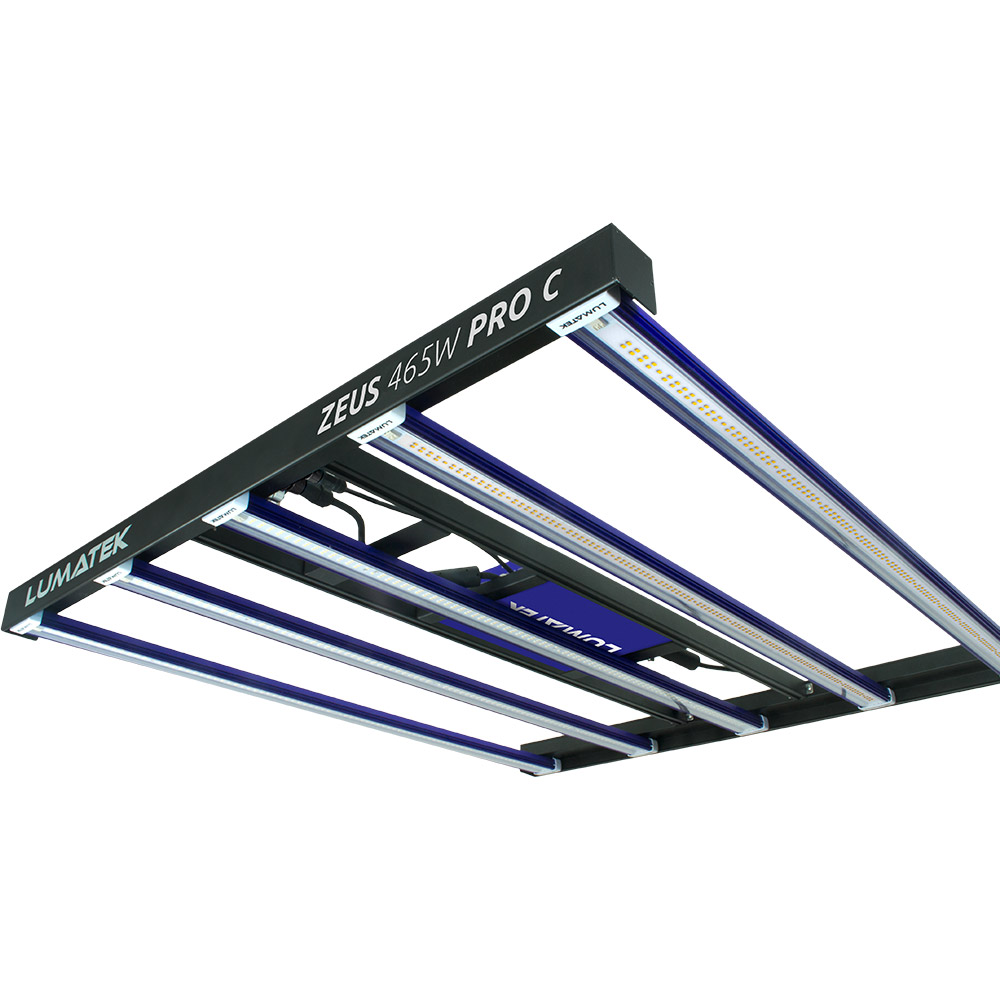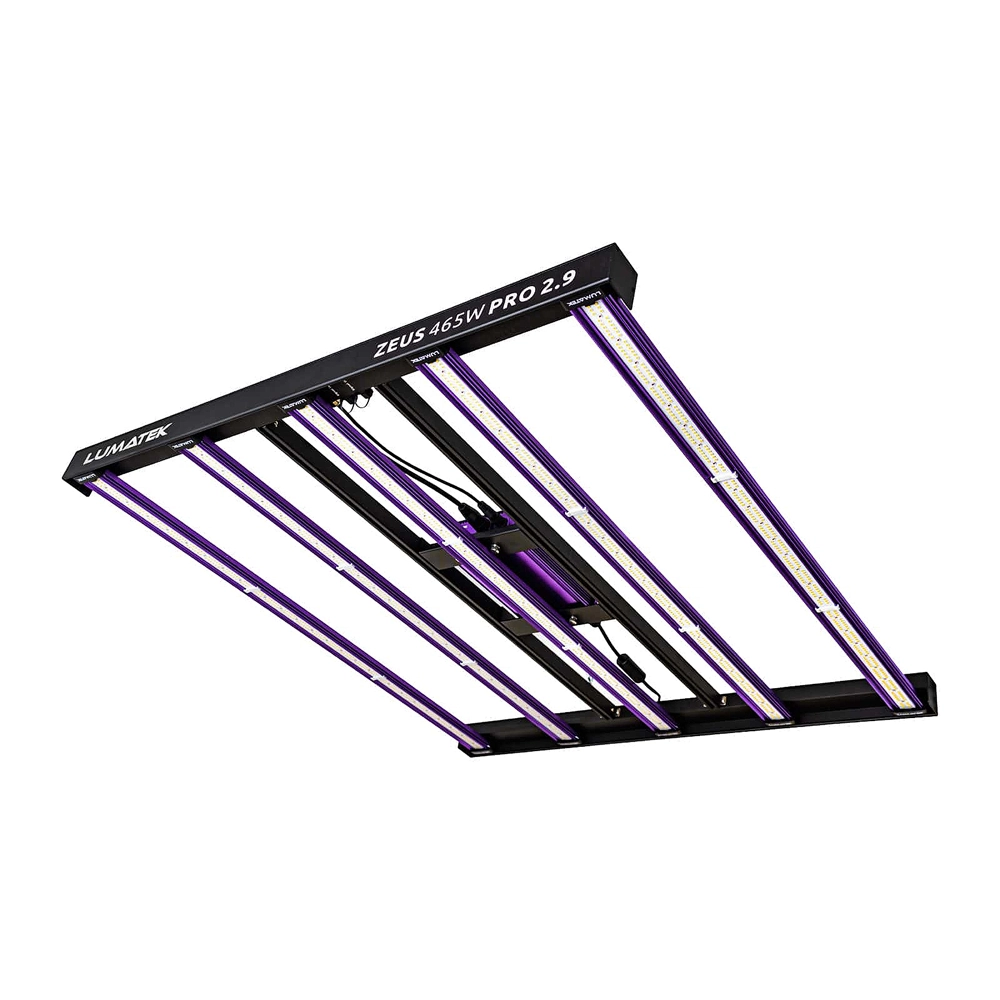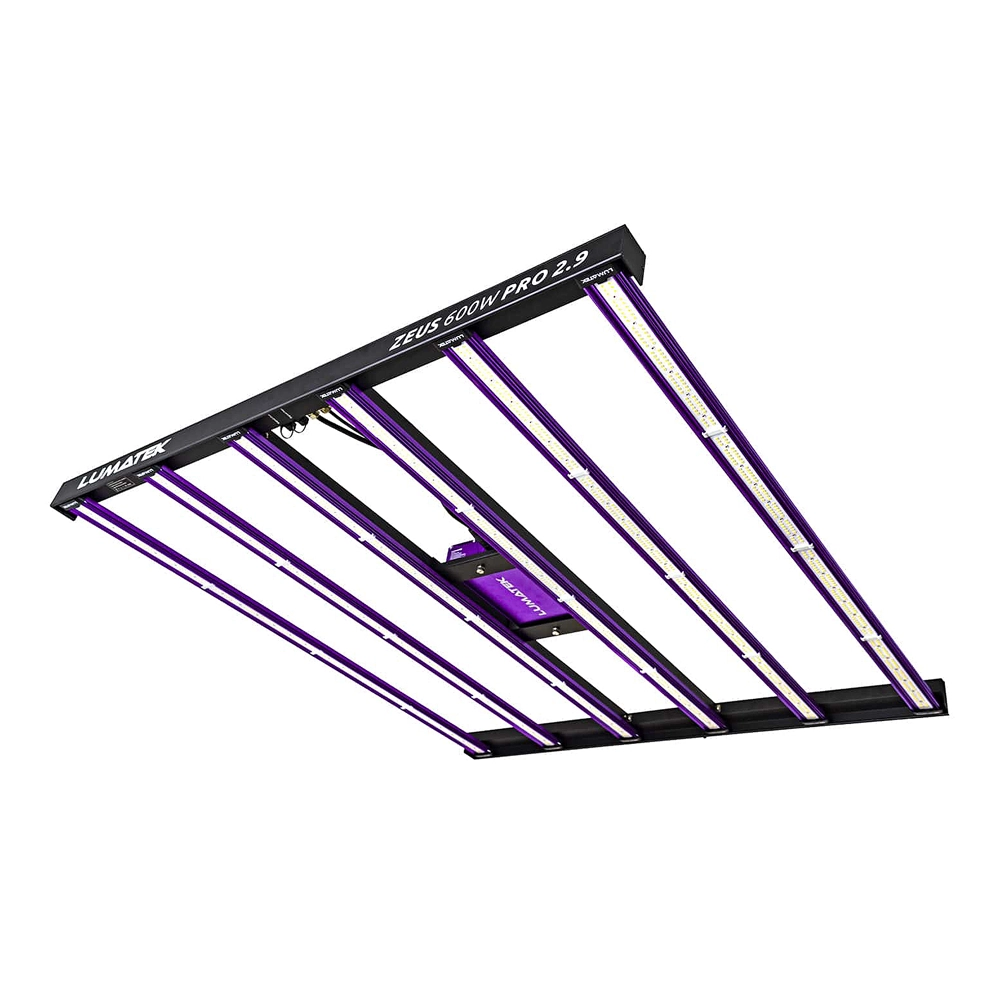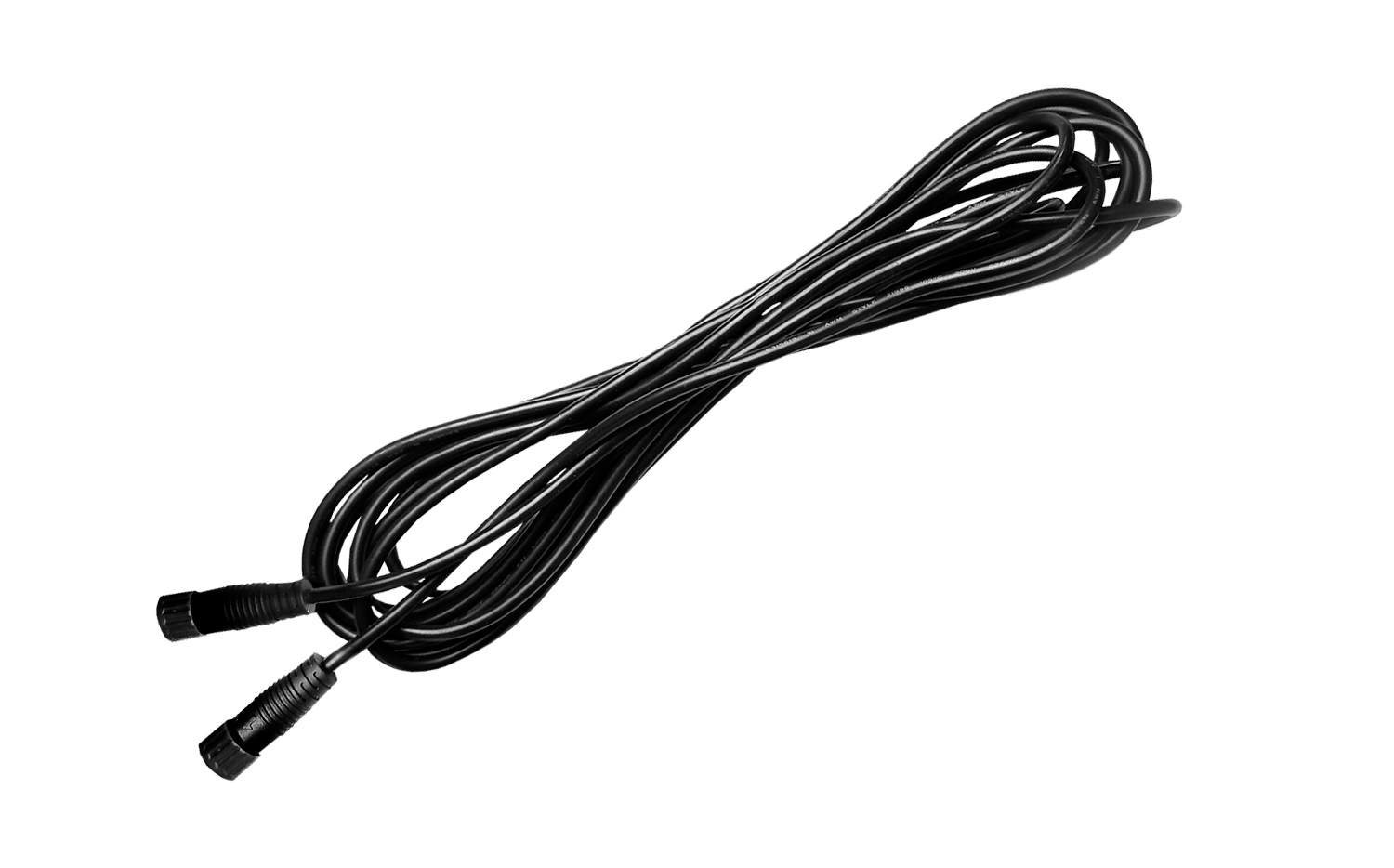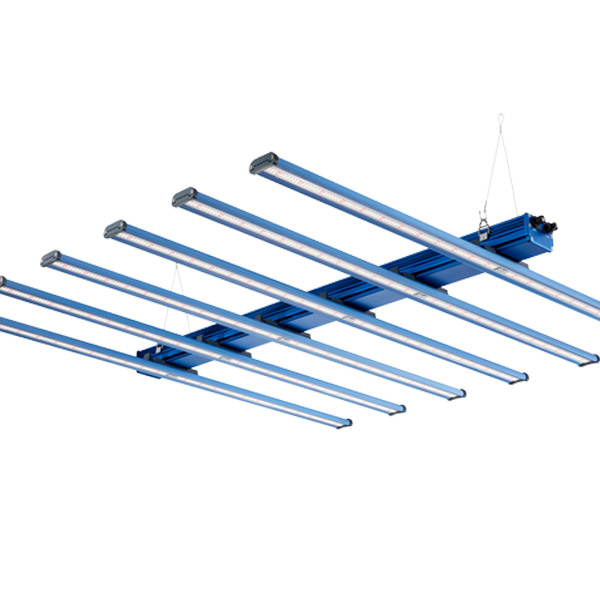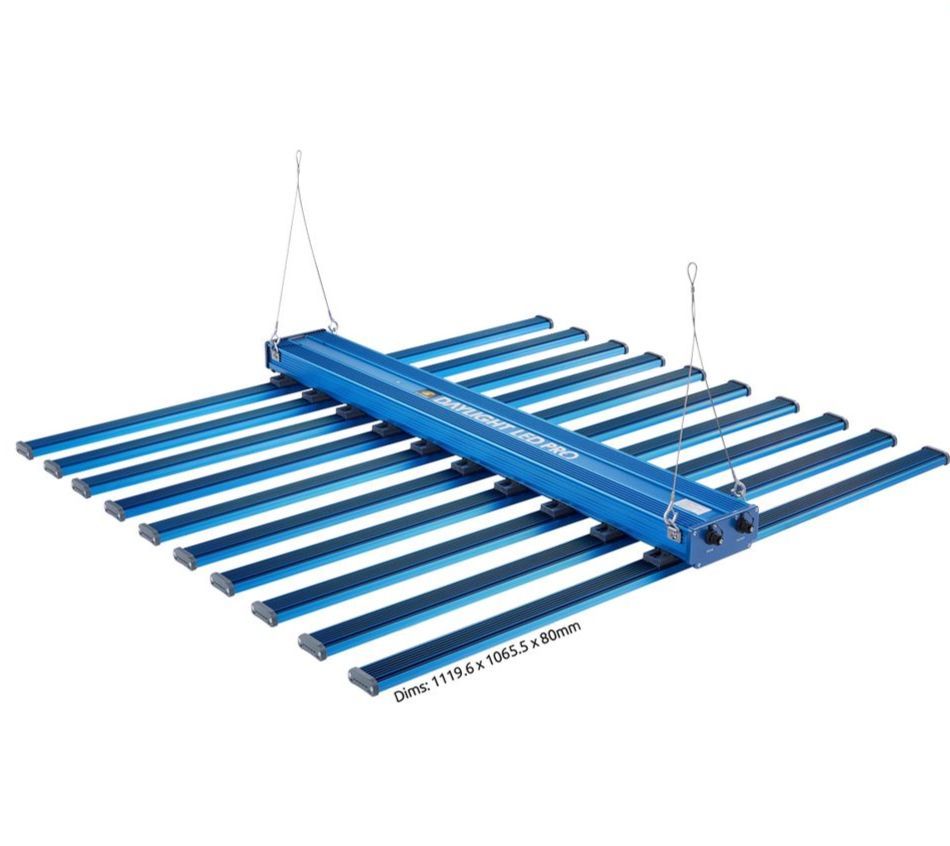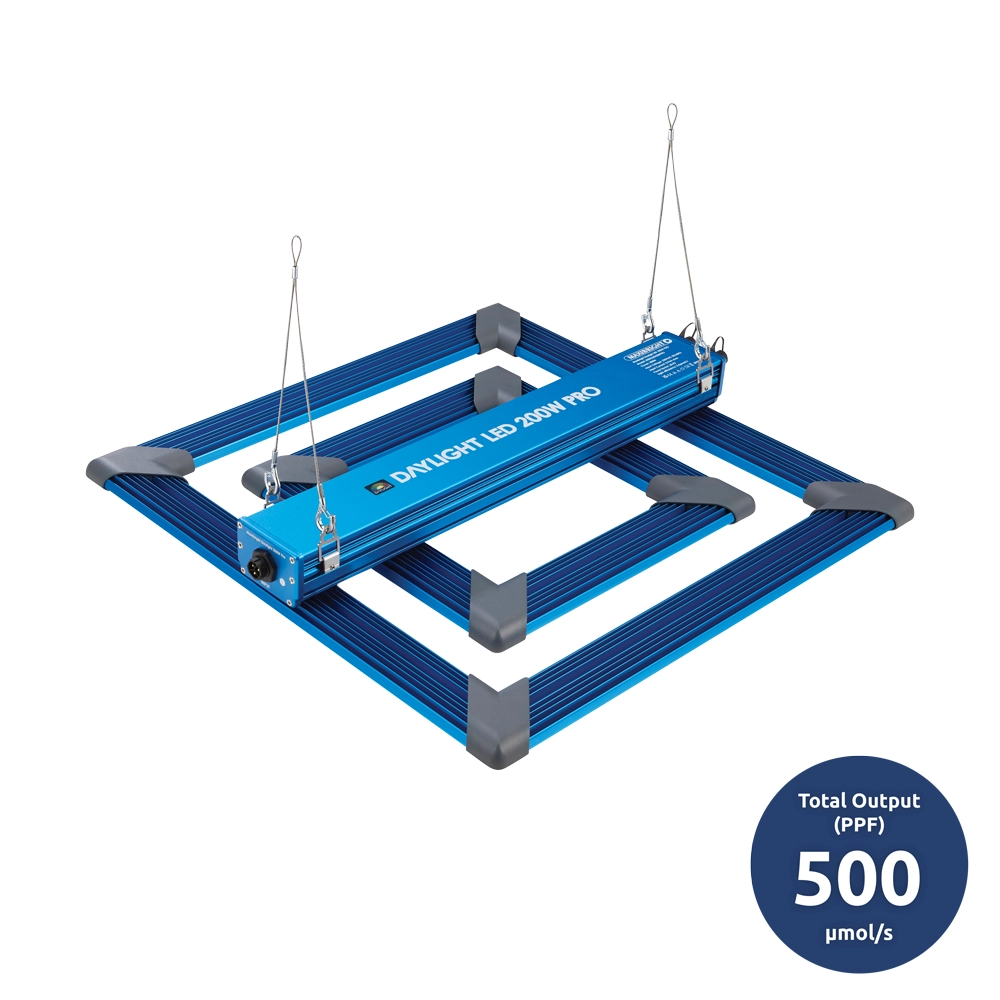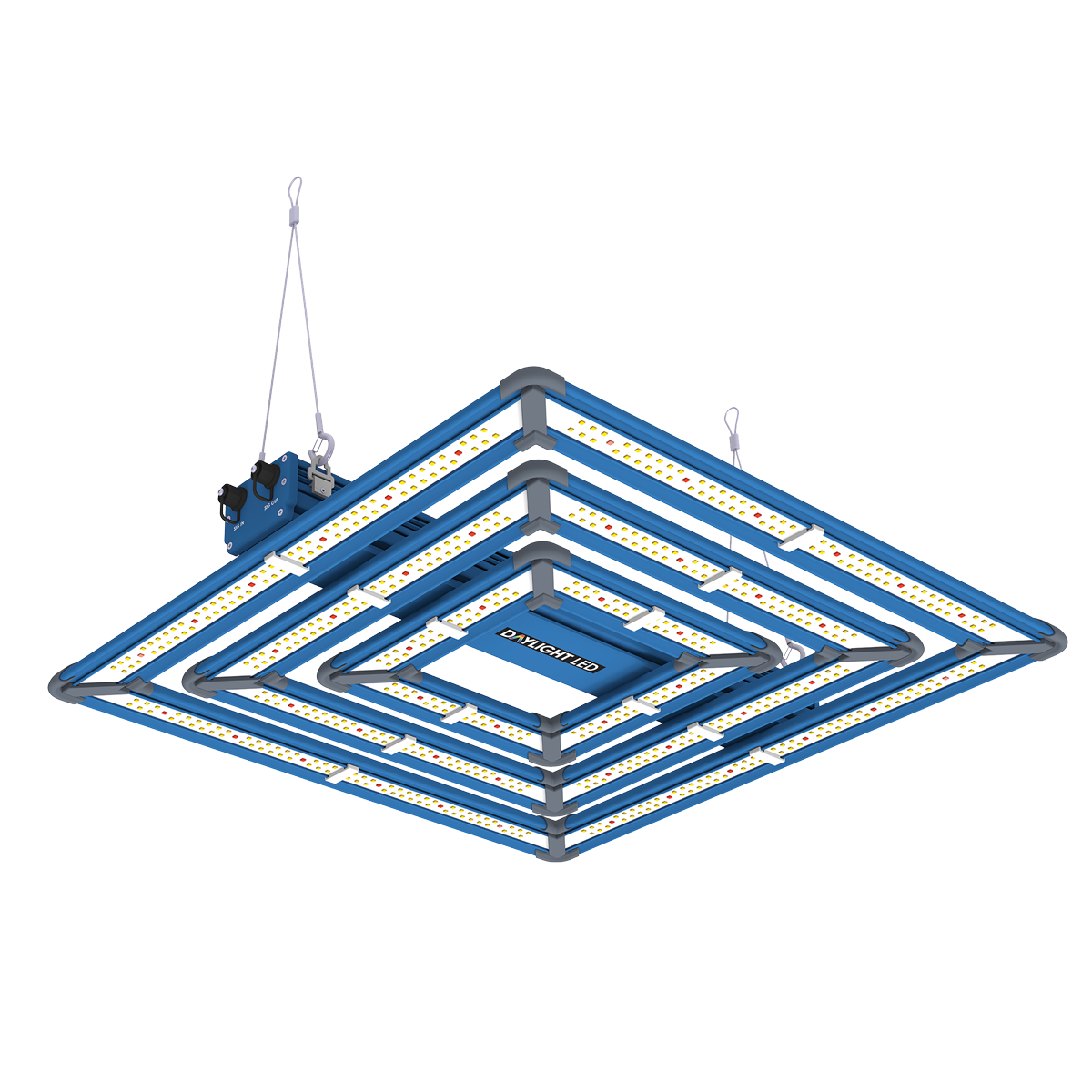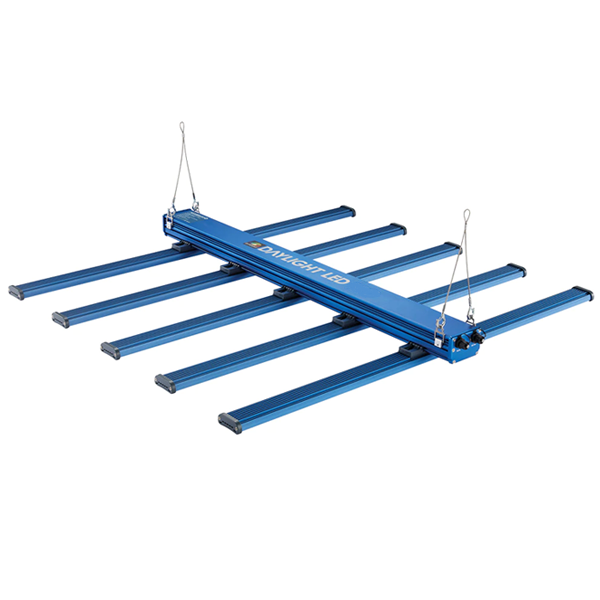Led Grow Lights have become the preferred choice for indoor horticulture lighting solutions in recent years. Light emitting diodes (LED’s) are now tailored to encourage optimal photosynthesis. Many mimicking daylight wavelengths or enable manipulation of those parameters with lighting controllers. It was an inevitability that eventually LED’s would become the ‘new normal’ with all the major manufacturers such as Phillips, Osram and Samsung stating effectively ‘LED lighting is off the future and here to stay’. Many of the fixtures Progrow offer utilise diodes from these world renowned companies.
Progrow have been in the fortunate position of watching the evolution of the use of LED grow lights for plant growth. We resisted selling them initially, a flooded market with inferior products meant biding our time the best option. Now it’s hard to see how Indoor lighting can get more efficient. Using LED’s you can be confident the energy you are paying for is being converted into useable light for your plants. With the ability to utilise web based software and apps from TrolMaster, Gavita, Telos and Maxibright. The user can control the intensity, create individual light recipes, cloud effect as well as set dawn and dusk settings.
Original price was: £1,529.95.£1,376.95Current price is: £1,376.95.
10% Off
Original price was: £750.00.£675.00Current price is: £675.00.
10% Off
We are now able to supply the most professional efficient LED grow lights available.
Our first foray into the world of LED lighting was customer driven. Ordering a few units specifically for customers desperate to get their hands on this new technology. After years of growing with High pressure sodium many were disappointed with yield, to say the least. We know of one customer who bought $25,000 worth of LED’s from the United States. These were then put into a skip after the first grow.
The same pitfalls are out there, as it is still a flooded market. As ever sticking to trusted manufacturers who are able to test the equipment, that produce to certain standards is the best advice. From the early days LED’s have certainly increased in efficiency making it the right time to switch to LED’s. In 2017 a group of prominent researchers including Bruce Bugbee Ph.D. and Erik Runkle, Ph.D. researching and reviewing the efficiencies of Indoor lighting concluded then changing from High pressure sodium lamps to LED’s could reduce costs by as much as 50%. Since then and particularly in our own industry in the last couple of years LED’s have really ‘come of age’ efficiency wise.
This is particularly true of the first LED system Progrow stocked. The Heliospectra was developed by a renowned Swedish electrical company who together with plant scientists developed the flagship LX601C. The heliospectra LX601C enables growers to very specifically control the spectrum, intensity and duration of light their plants receive via a web user interface. As a grower you are now able to perfect your own individual light preferences per crop. What has become known as (and sometimes highly prized) ‘light recipes’. As an example of the effectiveness the head gardener at the grove medical marijuana facility in Los Angeles (Kevin Biernacki) has been able to reduce flowering time by one week with his own ‘light recipe’. These ground breaking LED’s have been heavily invested in for many commercial markets around the world. Designed to perform in the rigours of a grow environment their low radiant heat enables growers to grow all year round, or in sealed Co2 systems.
With current systems like the Gavita Pro 1700E, Maxibright 660 at around 600w yield is maintained and surpassed. Most manufacturers are now using either Samsung or Osrams latest LED’s specifically made for Horticulture. Numerous studies suggest a full spectrum of light best for plant growth, colours of the wavelength such as green previously being ignored have been found to have an affect on growth. To this end Samsung utilise both a broad white and red spectrum’s for plant growth, the ‘broad white’ LED also includes blue, green, yellow with wavelengths of red spectrum at 660 and 730nm. Being specifically made for performance in a grow room, they are resistant to heat, moisture and sulphur in fertilisers. Osrams Oslon technology features High and Mid Power Light emitting diodes cover 660 nm (hyper red), 450 nm (deep blue) and 730 nm (far red), in three different radiation angles 80°, 120° and 150° to give optimum performance for plant growth.
Gavita’s excellent Pro 1700E mounts these Light emitting Diodes to produce efficacy of 2.6 µmol s-1 per watt. An 8-bar configuration allows you to mount this light source in low rooms, on vertical racks, over benches or in tents.
If you are used to measuring the efficacy of your lighting in lumens or lumens per watt you may be asking yourself ‘what’s a µmol?’. Whereas Lumens per watt gives you a crude output of the intensity of a light source it tells us nothing of the Photosynthetically Active Radiation or PAR ‘intensity’ that as growers we are interested in, those photons of light produced between 400 and 700nm. This PAR output divided by the input power to produce it gives us the ‘Photosynthetic photon efficacy’ or PPE. Light photons are measured in units of micromoles expressed as µmol, so the photons of light divided by the watts energy to produce it is expressed as μmol·s–¹·W–¹ and because one Watt is equal to one Joule of energy per second (J·s–¹) it can be simplified to μmol·J–¹ (μmol per second/joule per second).
So, the above mentioned Gavita Pro 1700E is producing 2.6 micromoles of PAR light per second per joule of energy, the higher the PPE the more of your energy is converted to available light for your plants. As an example, a 600w high pressure sodium lamp will operate at 1.8 μmol·J–¹ per watt a substantial difference in available light spectrum for your plants. Sanlight’s Q6W has been an incredibly popular LED with our customers, the version 2 boasting efficacy of 2.8 umol J–¹ leading to customers boasting of their yield. Maxibright’s recent entry into Horticultural specific LED’s with their ‘Daylight’ 200, 300, 480w and 660w LED’s provide many customer options for different size indoor grows.
Maxibright have developed and manufactured leading horticultural lighting here in the U.K. for many years and their pedigree is displaced in these quality LED’s. Looking at their flagship 660 Pro it boasts an efficiency of 2.7 umol/J, the Osram and LUMLED LED’s are mounted in 6 bars ensuring a good coverage over a 1.5m2 area. As with many of the newer generation of LED’s there are no cooling fans, instead heat is dissipated through heat sinks in the construction of the lights. These LEDs are also dimmable down to 25%, have IP65 rating to handle the rigours of a grow room, and with a projected 50,000hr lifespan well worth the investment.
So should I invest in LED lighting?
We feel now that ‘yes’ the technology has reached a point where older magnetic style and digital ballasts will be left behind as this new technology proves itself. Many commercial grow operations have made the huge investment recognising the investment payoff over time. Progrow would advise that if you are sure you will be growing for a number of years then the high initial investment is likely worth paying for. If an LED grow light has a projected lifespan of 50,000hrs it would be able to run for 12 hours a day 365 days a year for over ten years! It's not hard to see why so many are rightly making the switch to LED Grow Lights.

